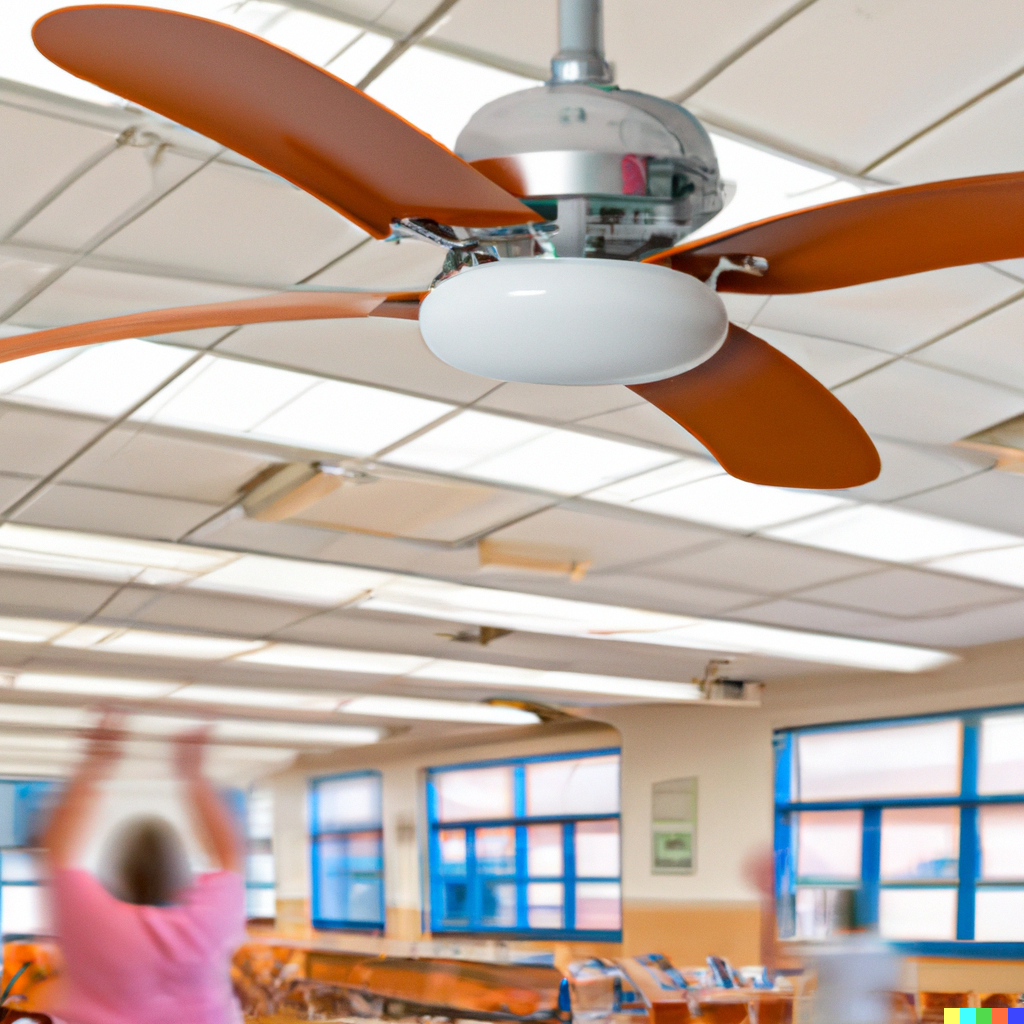No. 3: Install high efficiency ceiling fans in classrooms and shared spaces
No. 3: Install high efficiency ceiling fans in classrooms and shared spaces
Number 3
High-efficiency ceiling fans can reduce energy consumption, improve indoor air quality, lower maintenance costs, and offer potential energy efficiency rebates and incentives for schools. These benefits can save money and create a healthier learning environment.
Learn why you should do this:
As the world becomes more focused on sustainability and energy efficiency, schools are looking for ways to reduce their environmental impact and save money. One area that often goes overlooked is the use of high-efficiency ceiling fans in classrooms and shared spaces. By installing these fans, schools can experience both environmental and financial benefits.
Environmental Benefits:
The primary environmental benefit of installing high-efficiency ceiling fans is the reduction in energy consumption. According to Energy Star, high-efficiency ceiling fans can reduce energy usage by up to 60%. This is because they are designed to use less electricity while still providing the same level of comfort as traditional ceiling fans. This reduction in energy usage not only reduces the carbon footprint of the school but can also save a significant amount of money on energy bills.
Another environmental benefit of high-efficiency ceiling fans is their ability to improve indoor air quality. Stagnant air can be a breeding ground for pollutants such as dust, mold, and bacteria. High-efficiency ceiling fans can help to circulate the air, reducing the likelihood of pollutants building up in the air. This can help to create a healthier and more comfortable learning environment for students and teachers.
Financial Benefits:
In addition to the environmental benefits, installing high-efficiency ceiling fans can also provide financial benefits to schools. The primary financial benefit is the reduction in energy costs. According to a report by the Department of Energy, installing high-efficiency ceiling fans can save up to 20% on energy bills. This is because the fans use less electricity, reducing the amount of energy needed to cool or heat a room.
Another financial benefit of high-efficiency ceiling fans is their low maintenance costs. Traditional ceiling fans can require frequent maintenance and repairs, which can be costly for schools to keep up with. High-efficiency ceiling fans, on the other hand, are designed to require minimal maintenance and have a longer lifespan. This can save schools a significant amount of money over time.
Finally, installing high-efficiency ceiling fans can also help schools qualify for energy efficiency rebates and incentives. Many states and local utilities offer programs to incentivize energy-efficient upgrades, including high-efficiency ceiling fans. These programs can help schools offset the initial cost of installation, making the upgrade more affordable.
In conclusion, installing high-efficiency ceiling fans in classrooms and shared spaces can provide significant environmental and financial benefits to schools. By reducing energy consumption and improving indoor air quality, schools can save money on energy bills and create a healthier learning environment for students and teachers. Additionally, the low maintenance costs and potential for energy efficiency rebates make high-efficiency ceiling fans an attractive option for schools looking to reduce their environmental impact and save money.
Sources:
-
Energy Star. “Ceiling Fans.” https://www.energystar.gov/products/heating_cooling/ceiling_fans
-
Department of Energy. “The Benefits of High-Efficiency Ceiling Fans.” https://www.energy.gov/energysaver/home-cooling-systems/ceiling-fans
-
Green Building Alliance. “Indoor Air Quality in Schools.” https://www.go-gba.org/resources/indoor-air-quality-in-schools/
-
U.S. Department of Energy. “State and Local Energy Efficiency Programs.” https://www.energy.gov/eere/slsc/state-and-local-energy-efficiency-programs

More ways to make a difference, now!
No. 79: Use electric-powered school toolboxes and equipment carts
Number 79 This article discusses the environmental and financial benefits of using electric-powered school toolboxes and equipment carts, including reduced emissions, cost savings, and improved efficiency. Electric-powered school toolboxes and equipment carts are an...
No. 71: Use renewable energy-powered composters
Number 71 Renewable energy-powered composters provide environmental and financial benefits to schools by reducing organic waste and producing nutrient-rich soil while using clean energy sources. This solution helps schools meet sustainability goals and can save money...
No. 68: Install recycled rubber playground surfaces
Number 68 Recycled rubber playground surfaces offer environmental and financial benefits for schools. They are made from recycled tires, reduce waste and landfill use, and are cost-effective. The surfaces also provide a safe and durable play area for children. As...
All 100 ideas in one, easy to share ebook. Download now and start helping your school be its best version of itself...
Downloaded over 17,000 times!






